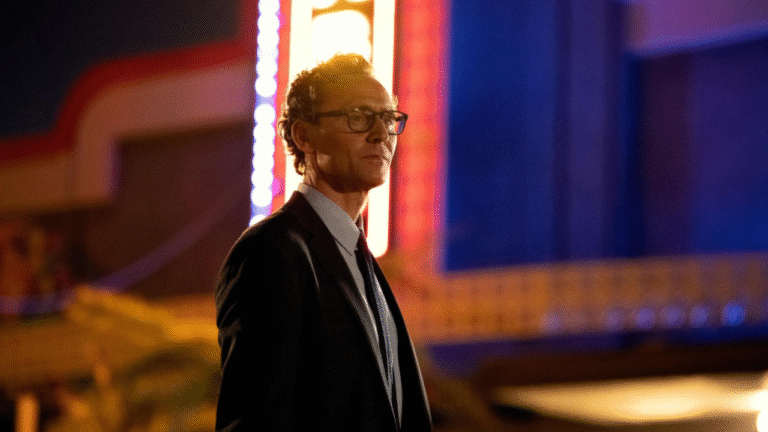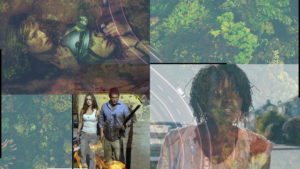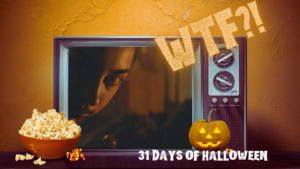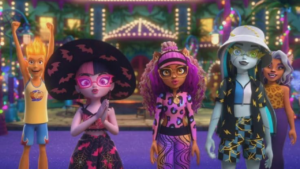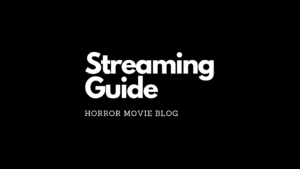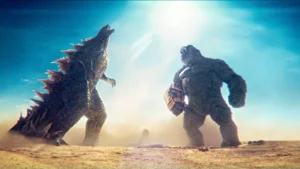Mike Flanagan takes a step into the world of fantasy with his latest Stephen King adaptation, The Life of Chuck. Unlike anything he has done before, the film takes us backward through Chuck Krantz’s (Tom Hiddleston/Jacob Tremblay/Benjamin Pajak) life in the form of three acts, beginning with Act Three. With a stacked cast from Chiwetel Ejiofor to Mark Hamill, Flanagan explores one man’s life and the people he carries with him from its start until its end.
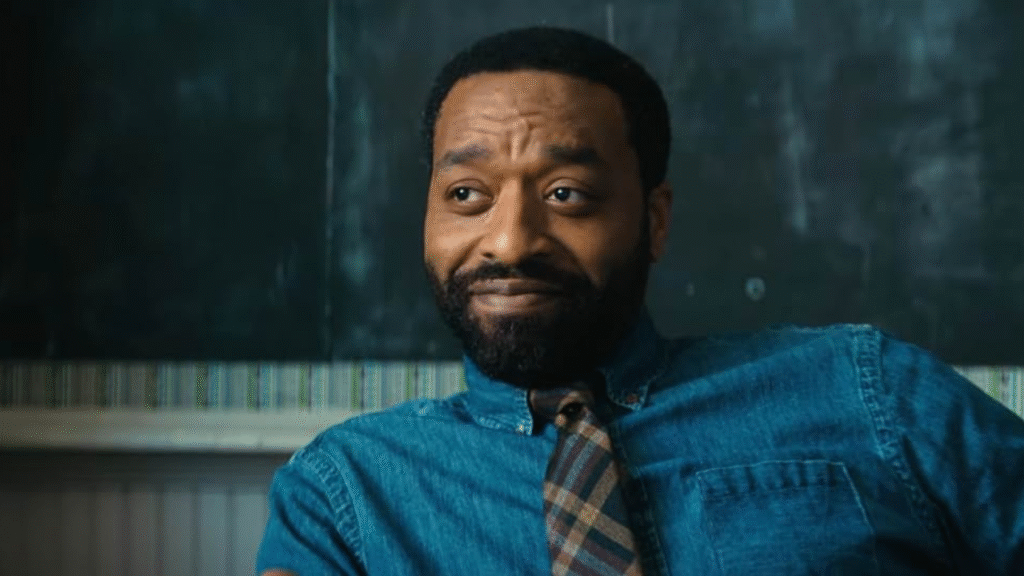
What is Chuck About?
The film plays out like an anthology of sorts. Each act represents moments in life, starting with the end. Flanagan flexes his horror-esque muscles with the opening act, where we see what seems like the current state of the world playing out on the news. Natural disasters are happening daily, wars are happening around the world, and the number of suicides is rising. Let’s be honest, turning on the news each day, the world looks like it’s coming to an end.
For Marty (Ejiofor) and his ex-wife, Felicia (Karen Gillan), it actually is. They do their best to live normally as a teacher and a nurse, continuing to do their jobs. However, when the internet goes away and a sinkhole opens up in town, there is no going back to normal anymore. Marty does his best to avoid the reality of what’s happening around him by changing the channel or grading his students’ work. As billboards and commercials break through, thanking Charles Krantz for 39 great years, this world unravels, and Flanagan does what he does best. Act Three is also where we get to see Matthew Lillard show us why he’s a gem and should be in every movie from now on.
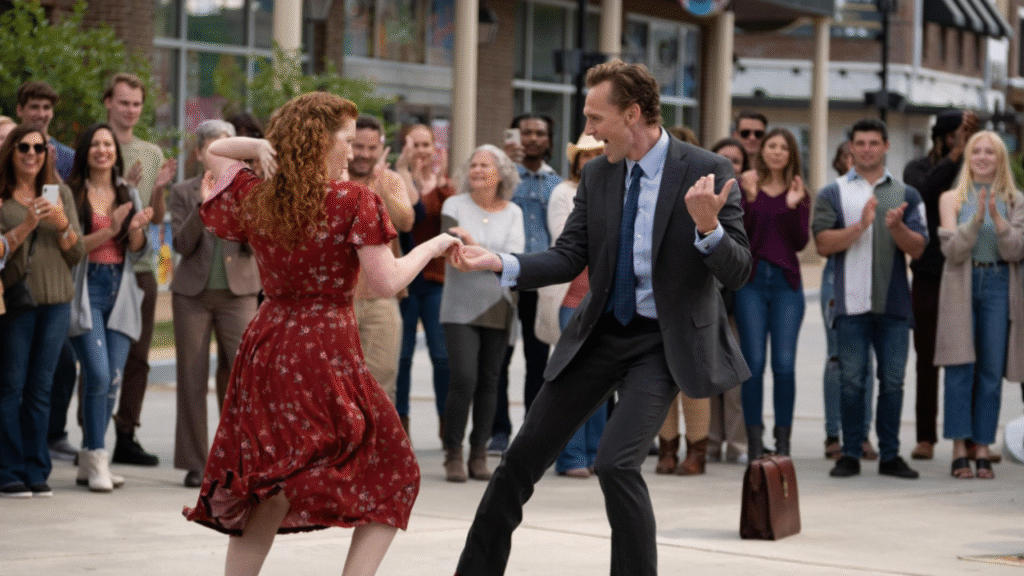
There is Always Time to Dance
While the second act isn’t as strong as the third, it’s where the pieces start to come together, and we understand Act Three’s significance. This is also the most we get to see of Hiddleston as Chuck. There’s a charming dance number between him and Little Sister (Annalise Basso) that goes on a little bit too long, but watching Hiddleston shake his hips in the middle of the street is always a good time. The second act is much shorter than acts one and three, much like our own lives, where it all seems to just fly by. We are reminded, again, what the film is really about when a young girl (that we’ve seen in Act Three) skates by while Nick Offerman narrates. By the time we reach Act One, this is something I could have done without.
In the final act, Act One, young Chuck’s life begins. We watch him grow up, and we can understand the building blocks of who he would later become and the universe he created in his mind. Like all of Flanagan’s work, there is no shortage of monologues. Mark Hamill (Albie) serves up some great ones, including one about math that was so well done I reconsidered how I feel about the subject. Albie, Chuck’s grandfather, had a secret room that showed him how people would die. Chuck spent most of his childhood trying to find a way into the room.
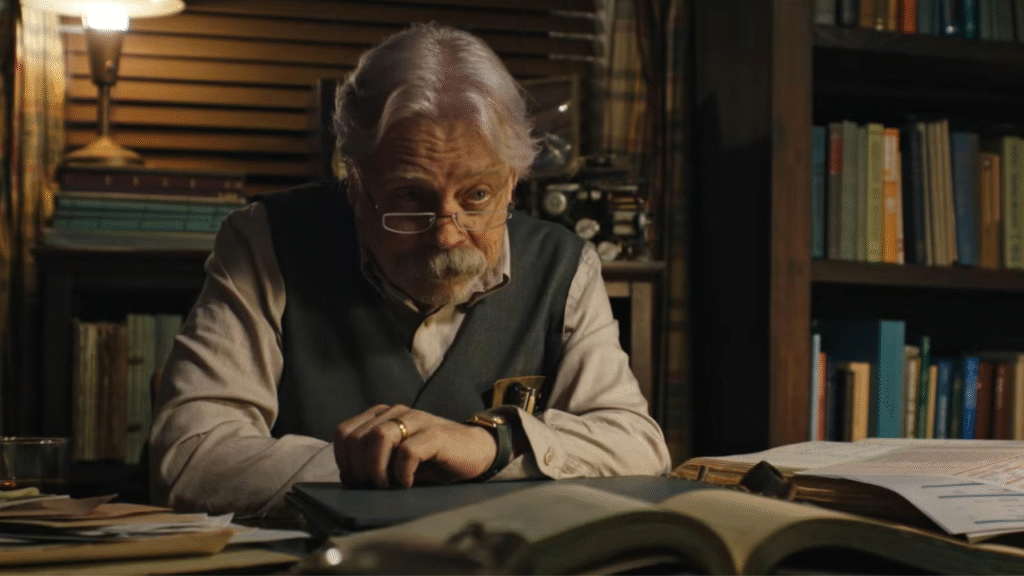
Life Itself
When he finally does, what he sees inside pushes him to live his life to the fullest. It fuels him to make every moment count, no matter how many years he has. Act One brings everything together for us and Chuck. There’s no way you can leave with questions because everything is laid out for you.
The Life of Chuck isn’t something we may be used to from writer-director Mike Flanagan. However, it’s his most human work to date. Flanagan is a master at bringing humanity into his work, and he doesn’t fall short here. Known for weaving emotional depth into horror, Flanagan leans into it to a fault. At times, the film runs a bit long. It also spells things out more than it needs to, leaving little room for interpretation. Still, there’s no denying the art of storytelling here. Flanagan reminds us that the scariest thing isn’t ghosts or monsters, but life itself.
You should read more of Kristie’s work here.

